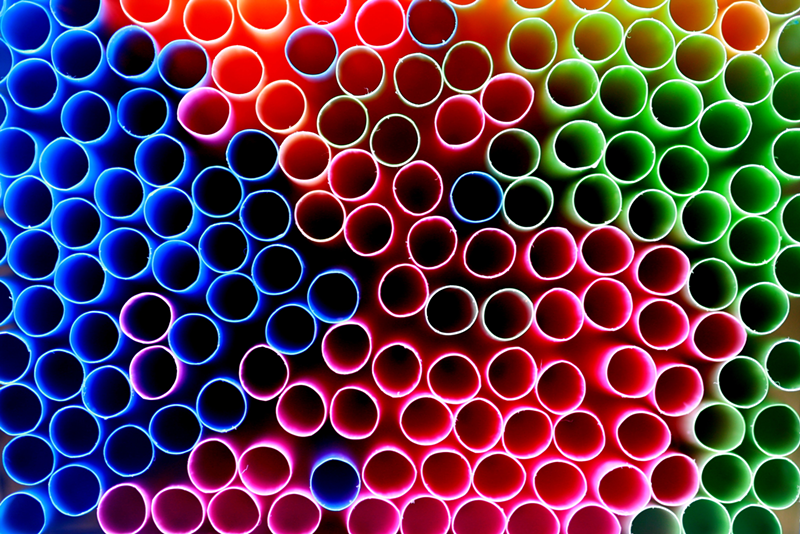
It’s rare that Americans band together against a common enemy all at once, but social media has a way of lighting fires where no one thought there was kindling. When a graphic video showcasing a team of people removing a plastic straw from a sea turtle’s nose, filmed in 2015 by marine biologist Christine Figgener, went viral this year, suddenly straws became taboo. Starbucks created plastic drinking lids to start eliminating its trademark green straws; Marriott announced a move to ban straws at 6,500 locations; and there’s a #stopsucking anti-plastic-straw campaign, with celebrity supporters like Neil deGrasse Tyson and Tom Brady.
The concern is that straws and other microplastics — basically little potentially carcinogenic particles of plastic that won’t break down or biodegrade — are polluting the ocean, injuring wildlife and entering our own bodies through the marine life we eat (fish eat plastics; we eat fish).
But the national conversation has become more nuanced as the days pass. Disability rights activists are speaking up about the fact that many disabled people rely on plastic straws in order to drink, and environmental activists are vocalizing that companies like Starbucks switching from plastic straws to similarly single-use plastic drinking lids isn’t that much of a difference.
So, what’s a Cincinnati business to do? We chatted with three different-sized local businesses — Goodfellas Pizzeria, Boomtown Biscuits & Whiskey and the Cincinnati Zoo & Botanical Garden — about their straw policies and thoughts on the national movement.
Goodfellas Pizzeria
While they have locations throughout the Tri-State, Goodfellas is famous for being Over-the-Rhine’s late-night pizza spot. With drunk munchies comes loud, inebriated people that might not understand why they aren’t getting straws with their sodas.
“Goodfellas is currently limiting straw usage by giving them on request only,” says Jessica Bostwick of Goodfellas’ administration. “We are passionate about the quality of life for the animals that are impacted by the irresponsible use of plastics.”
She says the restaurant was inspired to institute the policy after seeing the response they received by participating in a plastic use awareness campaign at one of their Lexington, Ky. locations.
“You don’t have to make a big investment to impact a big change,” Bostwick says when asked if she has any advice for other highly-trafficked spots looking to downsize plastic usage. “Start simple by only giving out plastic utensils and straws when requested. We have found that not as many people miss them as you initially assume might.”
Boomtown Biscuits & Whiskey
“From the beginning, we have utilized National Sanitation Foundation-certified reusable straws,” says Boomtown proprietor PJ Neumann. (The National Sanitation Foundation is a public health and safety organization.) “We did that in an attempt to eliminate our carbon footprint in the environment, because of the ungodly amount of straws that end up in landfills.”
Boomtown also composts nutritious food waste and uses linens instead of paper napkins, with disposable straws on-hand for to-go items — or at request.
“There are plenty of individuals in this city or who come into this city that need straws,” Neumann adds. “My grandma had MS (multiple sclerosis), and she needed a straw to drink a beverage. So, it’s so important to me to have it for people with physical disabilities, or who just prefer a straw.”
Is it more expensive to offer reusable straws rather than plastic straws?
“It’s about $18 for 200 reusable straws,” Neumann says. “That’s 9 cents per straw, good for 100 cycles in our industrial dishwasher. If you break that down per use, that’s less than a penny. With proper care and attention, it can save money in the long run and diminish your carbon footprint.”
Cincinnati Zoo & Botanical Garden
“We often hear, ‘It’s just one straw,’ but with 7.4 billion people in the world, everyone using ‘just one straw’ has a huge impact,” says the Cincinnati Zoo’s advanced inquiry program manager Jerran Orwig.
And it goes beyond harming wildlife instantly, like what was on display in the viral sea turtle video.
“Single-use plastics are usually made out of petroleum and this kind of plastic doesn’t biodegrade. They break down into tiny particles that will either bind to other pollutants or leach toxic chemicals themselves into the water,” Orwig says.
And it all comes back to us.
“Microplastics can easily work their way up the food chain, first consumed by tiny plankton and accumulating in larger animals; meaning that the fish you buy at a grocery store or restaurant has a good chance of containing small pieces of plastic in it, which is harmful to our health,” says the zoo’s sustainability specialist Lauren McClure.
While plastic straws are not banned at the zoo, they have been limited since 2010. Only one item at the zoo comes with a straw (a souvenir ICEE, with a hard-plastic reusable straw).
“Plastic straws can provide a hazard to the animals if they were to get into the exhibit,” says Jordan Miller, general manager for zoo food and beverage provider Service Systems Associates. “I believe it is important for us here at the Cincinnati Zoo & Botanical Garden to practice what we preach and lead by example.”
The zoo’s Base Camp Café made headlines in 2013 for being named the “greenest restaurant” in the country, as certified by the Green Restaurant Association. So the zoo encourages guests to examine the way they interact with the environment while eating and drinking. And it’s not just about straws — though the zoo is happy to see the national conversation taking place.
“We will continue to push the bar in educating our guests by changing the way we operate, (by) sourcing local foods and reducing our carbon footprint, reducing single-use plastic with bottled beverages, redesigning retail packaging to remove plastic and many more initiatives,” Miller says.
McClure adds that the zoo’s solar panel set-up, cell phone recycling program, LED bulbs at the Festival of Lights and even Fiona’s clean rainwater pool all help contribute.
“Through all of these efforts, not only has the Cincinnati Zoo saved millions of dollars to reinvest in more green initiatives, we have more importantly helped to decrease our impact on the environment,” she says. “Through education efforts, the 1.8 million guests that we see annually can come and learn about steps they can take to become better citizens of the earth.”
*This story has been updated to reflect the print version


